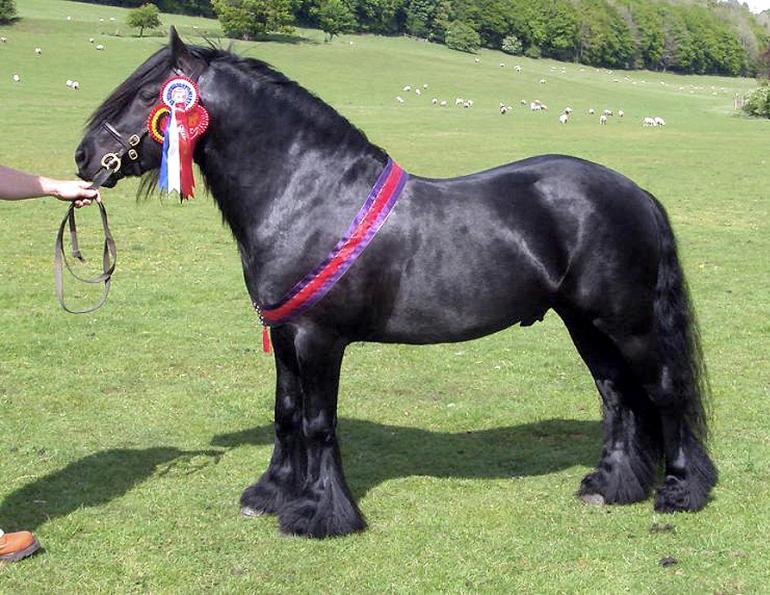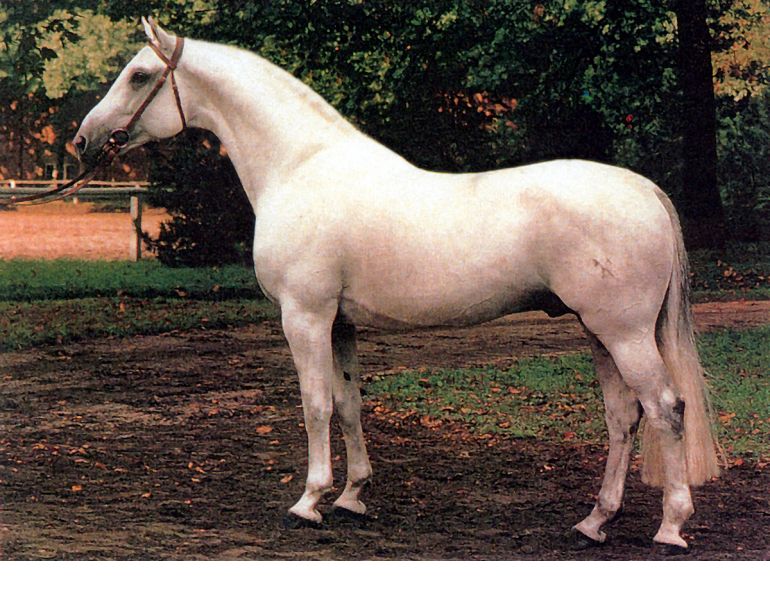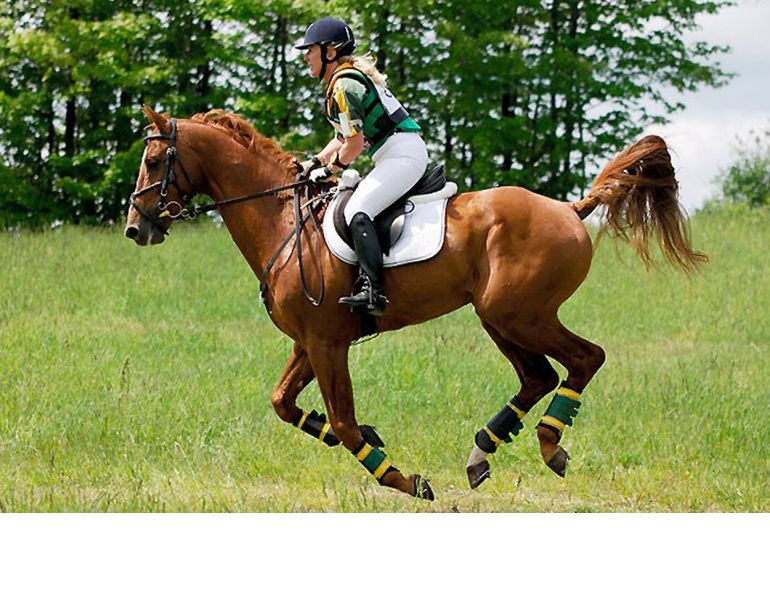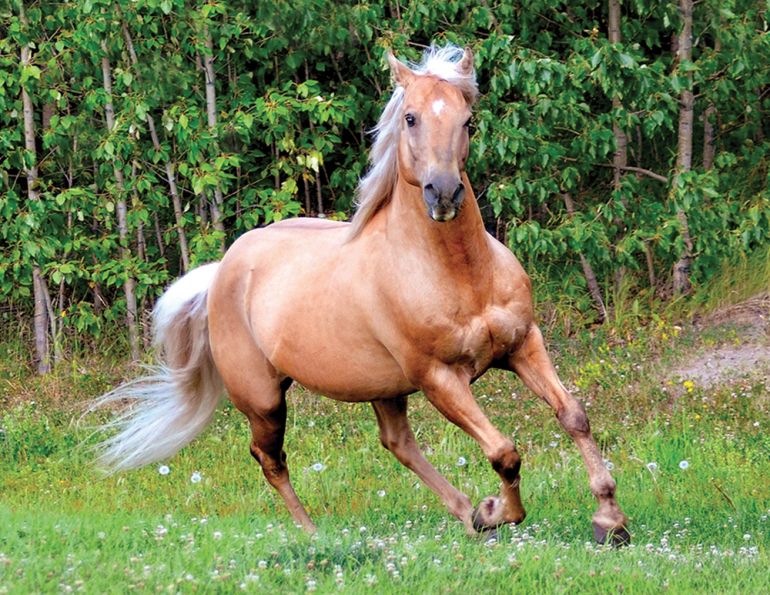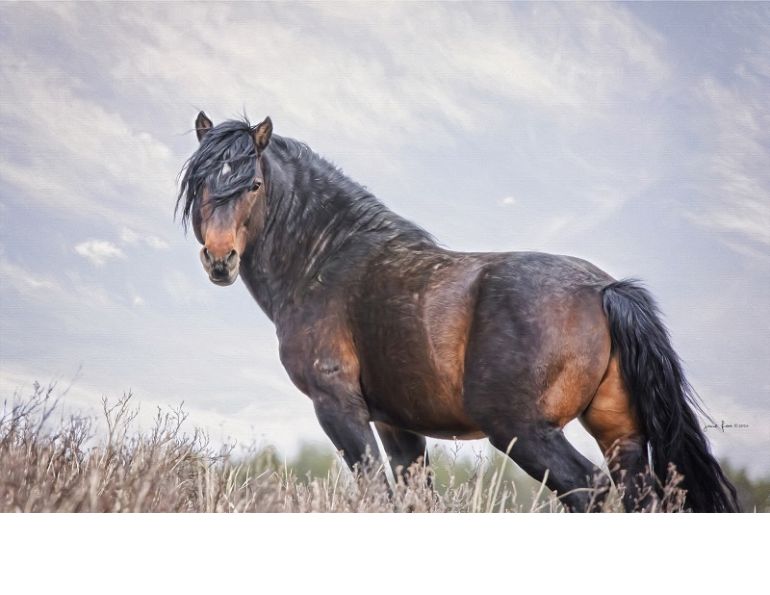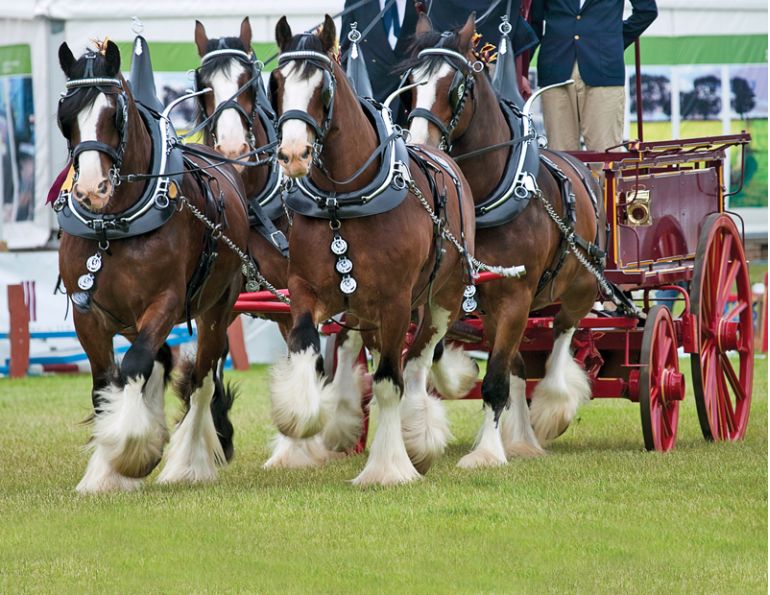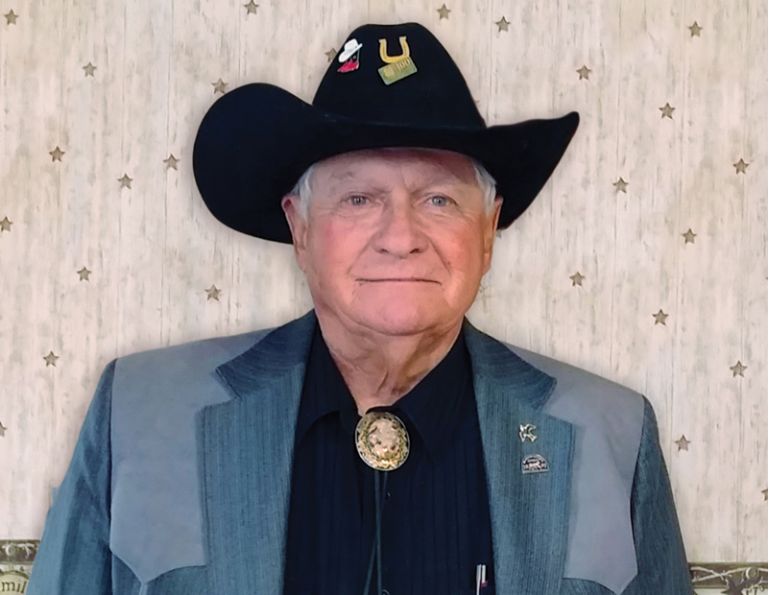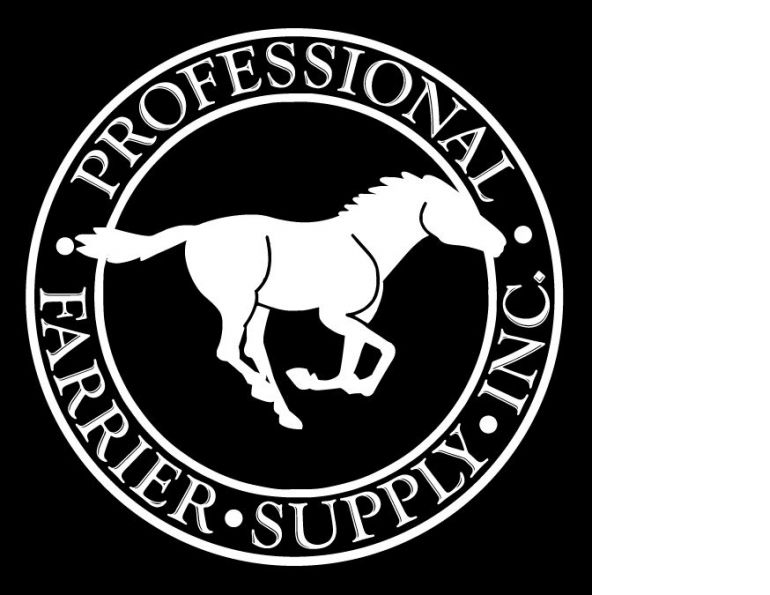By Margaret Evans
If history was written on the back of a horse as inscribed at Kentucky’s Horse Park, then the history of Britain and its transportation system was written on the back of a Fell pony. By any definition, these versatile equines have been doing their fair share of heavy lifting for thousands of years.

Semi-feral Fell ponies on the Howgill Fells in Cumbria England. Photo: Courtesy of MJ Gould-Earley
This tough, savvy, enduring pony is indigenous to the steep, sweeping hills, or fells, rocky outcrops, and open ridges of Cumbria in northwest England where for millennia it adapted to cope with extremes of conditions and climate. This is England’s renowned Lake District, home to settlers for over 5,000 years.
Echoes of their passage are left in fifty mysterious stone circles, some the oldest in Britain, and emperor Hadrian’s Wall. Within the home ranges of the ponies are the ancient Herdwick sheep which are born black and become white. As fell-top grazers, they maintain the heather and grass, keeping bracken and scrub under control.
A Fell pony stallion at liberty. Photo: Courtesy of MJ Gould-Earley
The first wild ponies came to the British Isles between 100,000 and 200,000 years ago, wandering across a low plain that would become the English Channel. They grazed in the shadow of mammoths and fell prey to sabre-toothed tigers, wolves, and bears. Their numbers ebbed and flowed with advancing and retreating ice sheets, climate change and altering landscapes. They were a source of food for Stone Age hunters. With their innate ability to adapt to constantly changing conditions and pressures, pockets of wild ponies established ranges on hillsides, moorland, and mountains to eventually become distinctive types. But for many breeds, and especially the ponies of the fells, their destiny would be interwoven in the tapestry of British history.
In 500 BC the Celts invaded from Europe, the original tribe in northern England being the Brigantes. Theirs was the Kingdom of Rheged that included modern day Cumbria and Galloway in southern Scotland, the range of the Fell ponies. To the Celts, horses and ponies were not only central to their way of life, but sacred. They featured in legend, art, weapon designs, and jewellery. They were status symbols, war mounts, and plough horses.
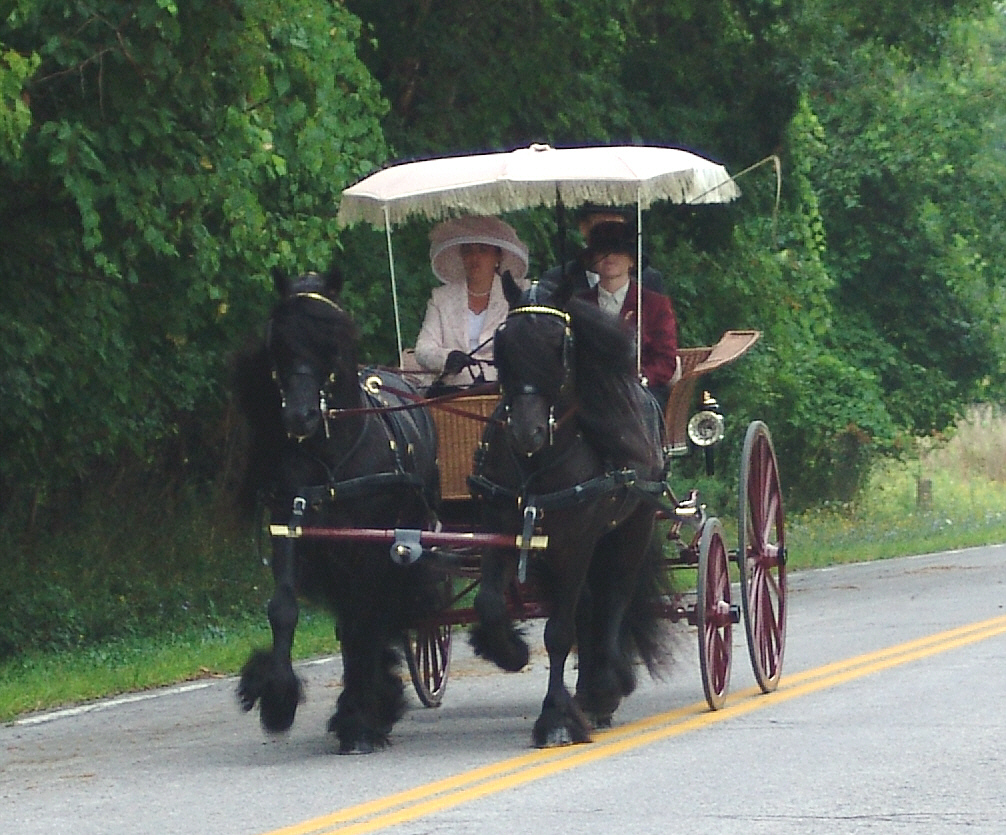
A pair of Fell pony stallions in harness. Photo: Courtesy of MJ Gould-Earley
The Romans landed in AD 43 and nearly a hundred years later emperor Hadrian, with political adroitness, drew a line in the sand for the frontiers of his empire. That line in northern England became his legendary Wall “to separate the Romans from the barbarians.” Grazing within the catchment area of Hadrian’s Wall were Fells, 13-hand ponies, mostly browns, bays, and blacks. In all probability they were used to transport materials in the building of the wall and for defence to protect the border.
They likely interbred with the war horse stallions the Roman auxiliary troops brought in from Spain, Gaul (France), Frisia (Holland), and Belgae (Belgium). Those bloodlines helped shape many native pony breeds and may have added to the defining characteristics of the Fell.
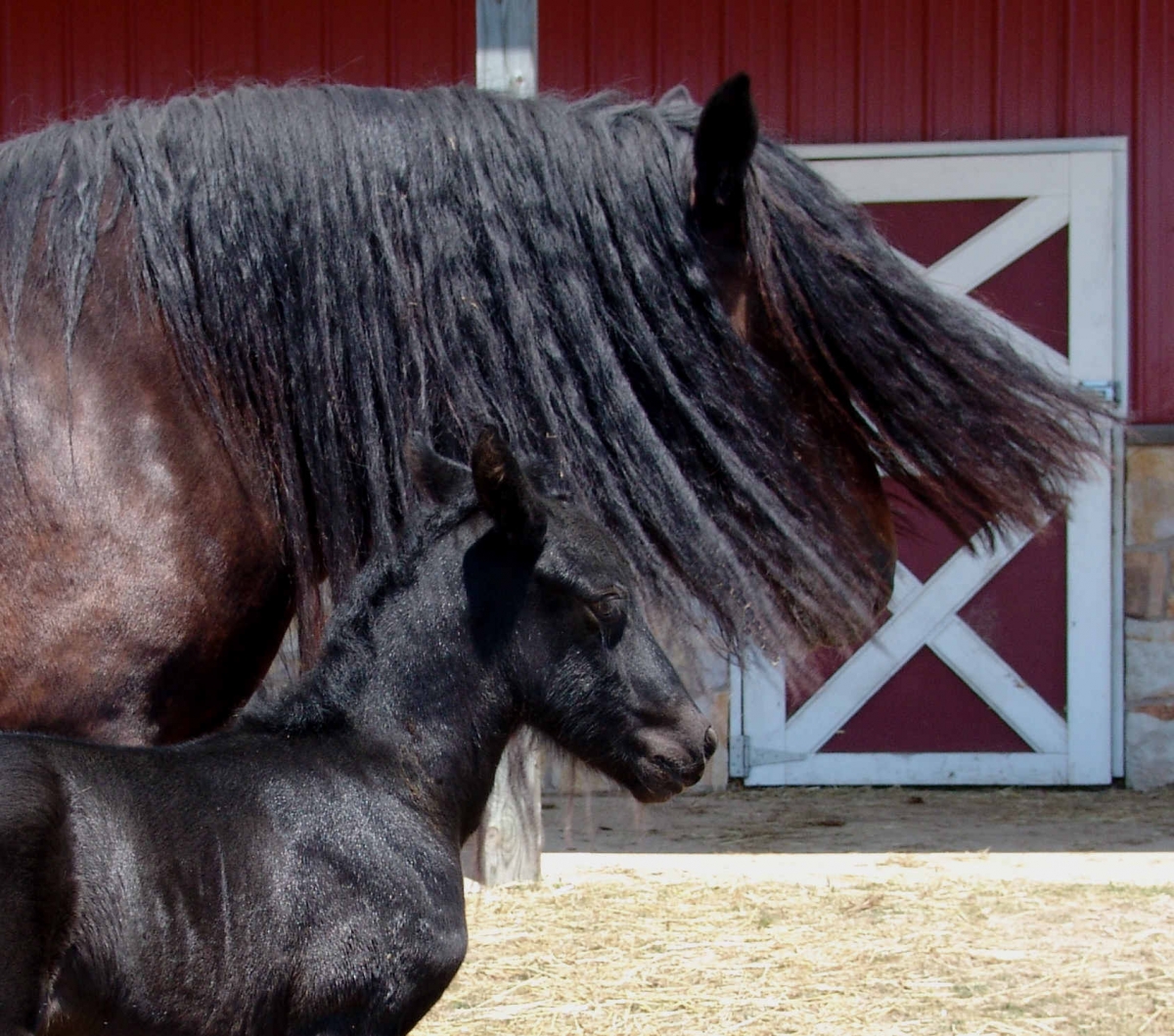
The bay Fell mare Dolly, with her black filly. Photo: Courtesy of MJ Gould-Earley
Given the pony’s convenient size and its toughness, stamina, and endurance, they were perfect working and pack animals. Those for riding and harness were kept in the villages while breeding stock lived in the hills. The Norsemen, or Vikings, who settled in northern England in the late 8th century, used them for ploughing and sleigh-pulling.
They valued them so highly that laws were enacted to prevent injury to horses and prevent pregnant mares from ploughing for fear they would abort a foal. Norman priories and abbeys often kept hill ponies in preference to cattle since, in the security of bands, the ponies could defend themselves better against wolf attacks. Through the centuries they would have been used for logging, haying, harvesting, and shepherding.
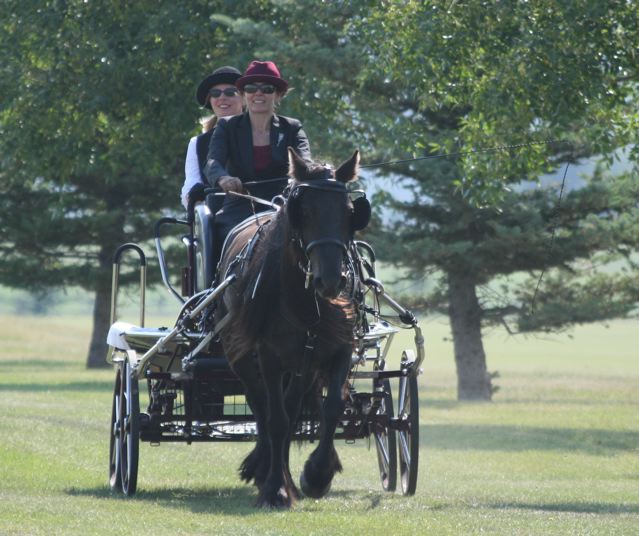
At home in harness, the Fell pony excels in combined and pleasure driving. Photo: Courtesy of Kim Cote and MJ Gould-Earley
The ponies were perfect pack animals. They were small enough to be easily loaded yet steady, fast, sure-footed walkers moving in line nose-to-tail following the lead ‘bell’ horse along narrow rutted trails and over bridges just wide enough for one pony at a time. They were the single most effective transportation network of goods in medieval times and they could travel close to 400 kilometres a week. Over the centuries, they carried wool to market, corn to the mills, and packed slate, copper, lead, and iron ore to the smelters and industrial centres. Given their quiet demeanour and dark colour, they likely were used in funerals. When fitted with panniers, they carried anything from peat as fuel to vegetables from the market or grouse hunted on the moor. Given their speedy, comfortably gaits, Fell ponies were used extensively by postmen delivering mail in rural areas. Not only was the Fell pony central to rural economy but the foals were added income. Brough Hill Fair, established in 1330, was one of the main markets for foal trading.
Stonecreek Ivy is described by owner Natasche Wille as “very sweet and patient, even as a youngster.” Photo: Courtesy of Natascha Wille
The Fell pony, which does not exceed 14 hands, can be defined as much by its exquisite look as its superior temperament. According to the Fell Pony Society, the head is classically pony with small ears, wide-set eyes, and large expanding nostrils. Shoulders are well laid back and sloping with well developed muscle. It has a deep chest, muscular loins and strong hindquarters. Its legs are straight with big well-formed knees and a short cannon bone. Feet are round and well formed.
While the predominant colour is black, which came into prominence in the second half of the 20th century, there are many bays, browns, and greys. Chestnut and pinto is not allowed in the registry. A star and a little white are allowed.
Many of the older Fell pony farmers and breeders in Cumbria still strongly prefer a brown or bay pony, believing they cannot be beaten for hardiness.
The ponies have luxuriant manes and tails and their lower legs and feet are fine feathered. In fact, they have more feather now than their counterparts did in the 1800s. Their overall appearance is one that demonstrates a constitution as hard as iron and their way of going is clean and true with good knee and hock action.
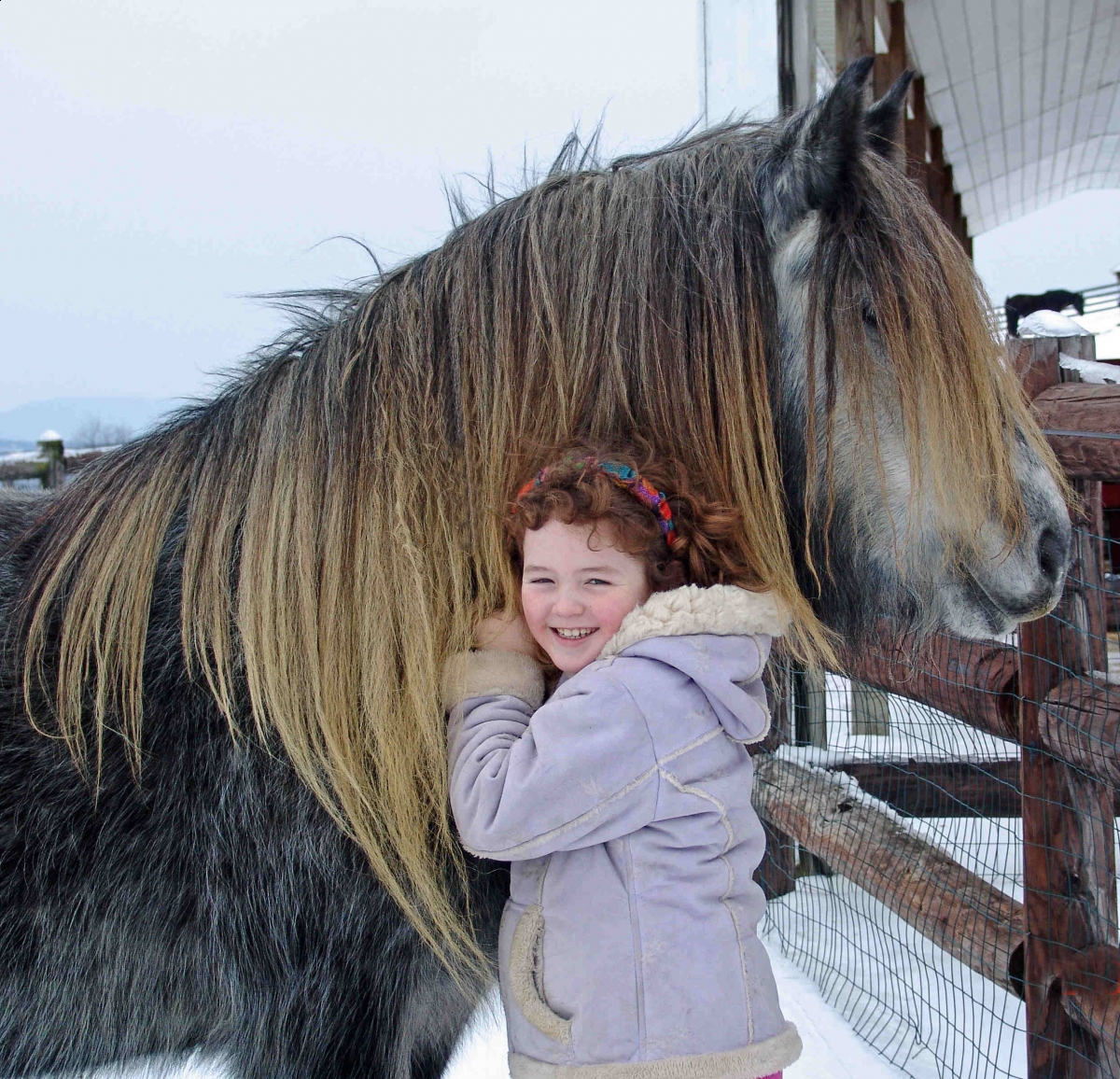
Fell ponies are wonderful for children and excel as Pony Club and 4-H mounts. Photo: Courtesy of MJ Gould-Earley
Fell ponies are, as the old-timers would say, ‘good doers’, meaning they can work hard all day on modest rations which is understandable given that their survival abilities in rugged country under extreme conditions allows them to thrive on poor or sparse forage. Responsible care and appropriate nutrition will keep a Fell pony in optimum condition for a lifetime.
While the look of a Fell is striking, it is his eyes that captivate. That bright spark of intelligence and willingness comes from a heritage of solid, honest work. He is a no-nonsense performer. He learns fast and can be trusted to do his task well. But he does not suffer fools lightly. A Fell is a mountain pony, a survivor, an animal able to think on its feet, be cautious and savvy.
“They are not pushovers,” emphasized Natasha Wille, owner of Three Gables Farm on Saltspring Island. “We imported our first filly ‘Stonecreek Ivy’ from Texas. She is very sweet and patient but she will challenge who is leader. You have to be on your toes.”
Given their hardiness and temperament, Fell ponies are ideal for all family members. They can carry adults and they excel with children.
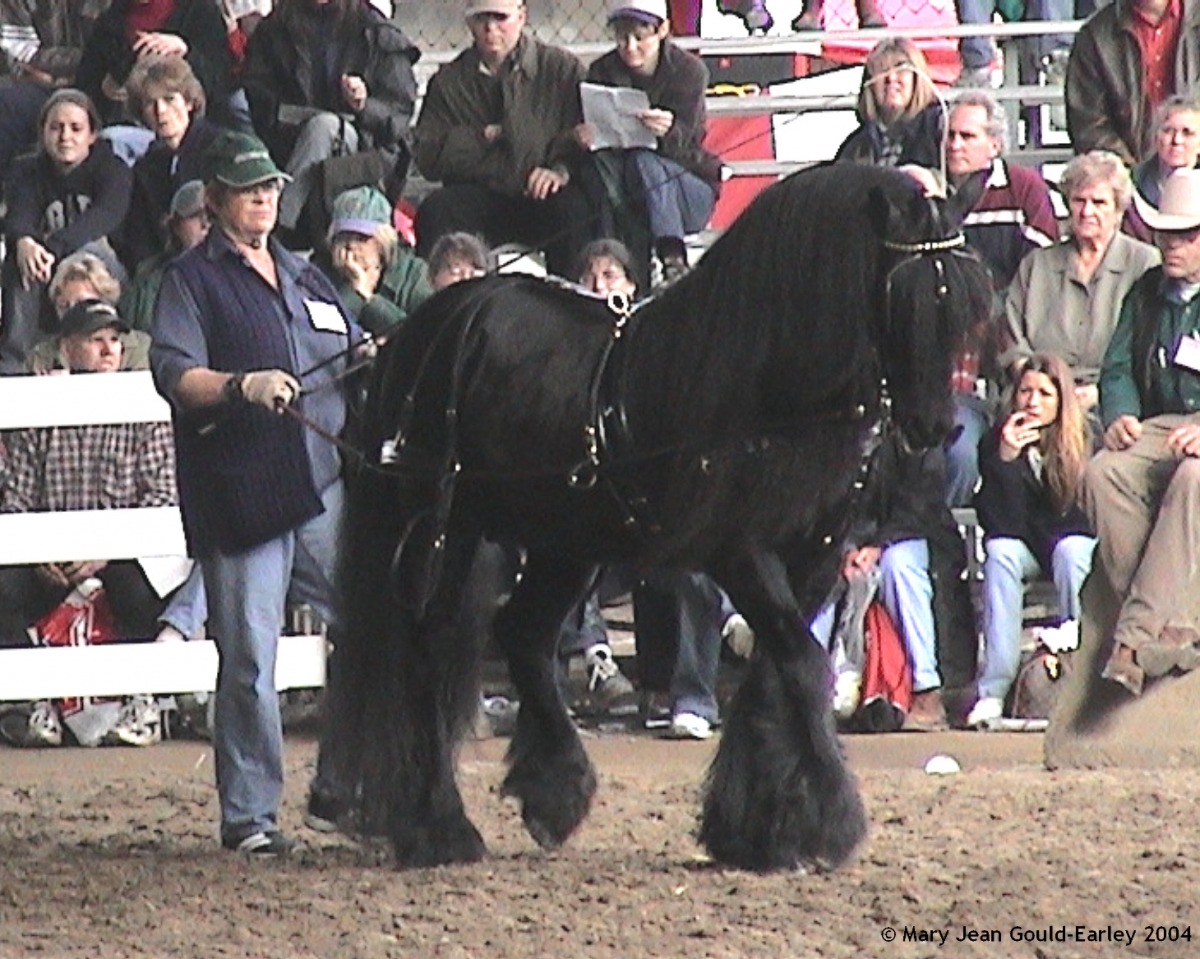
Carriage driving champion Muffy Seaton works with a Fell stallion in a driving clinic. Photo: Courtesy of MJ Gould-Earley
They are ideal as Pony Club or 4-H mounts and their sensitivity makes them valued in therapeutic riding. For distance riding, the Fell’s fast walk and easy paces have been legendary. In the 13th and 14th centuries, north-country farmers bred Fell ponies as suitable long distance mounts for townsfolk. Their comfortable, long-striding action would eat up the miles making travel both enjoyable and economical, especially over rough-hewn footpaths and tracks.
The steady ride comes from the pony’s trusted sure-footedness born of centuries of living among the hills and ridges. This quality makes them highly desirable as a backcountry mount.
The Fell Pony Society holds an annual performance trial in which competitors are tested over varied, challenging terrain including steep and twisting hill slopes, boggy ground, water crossings, logs, and other typical hazards.
Fells are dependable jumpers and they are especially suited to horse trials because of their surefootedness and endurance. With appropriate conditioning, they make excellent mounts for distance riding competitions. The breed is one of choice in riding and pony trekking stables in England.
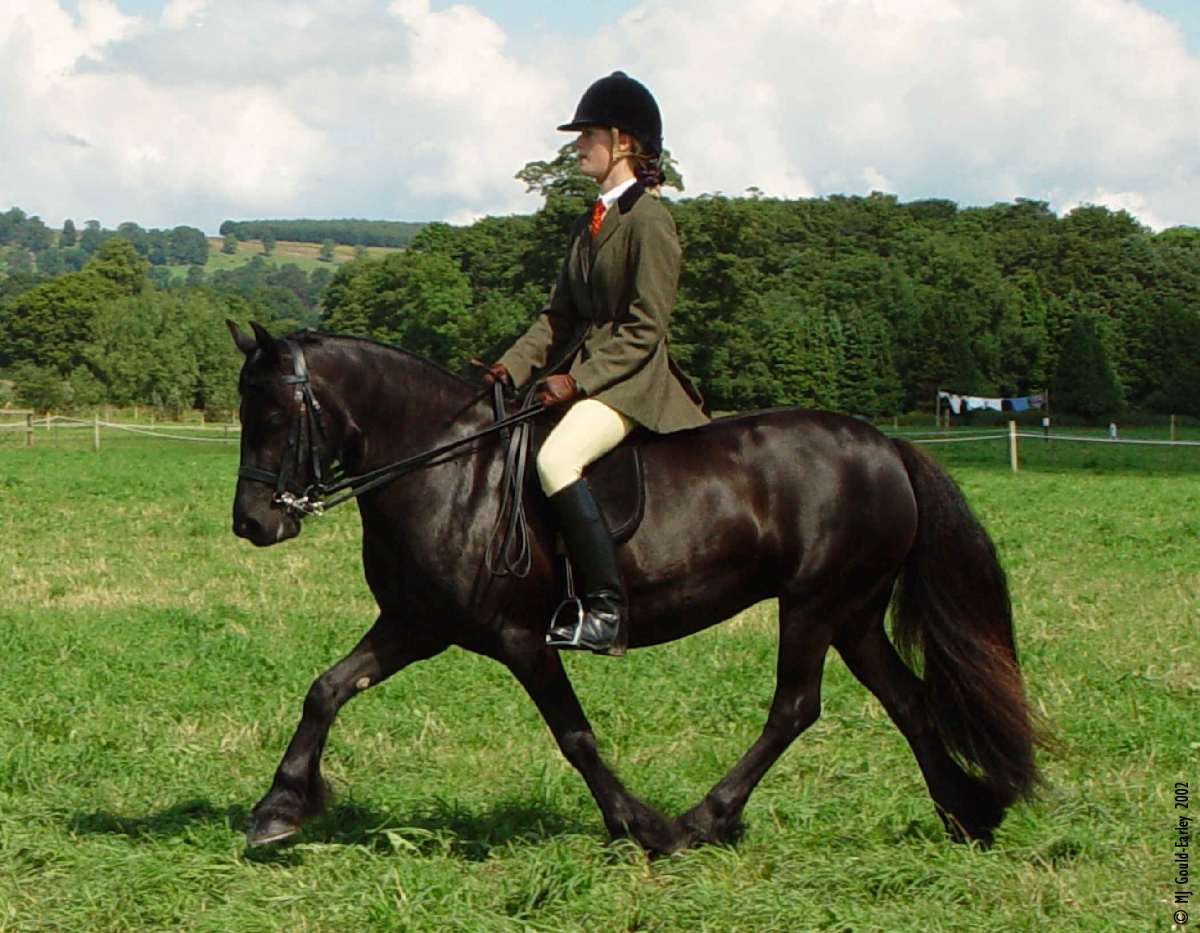
This Fell pony mare was Ridden Champion at the FPS Breed Show in Cumbria in 2002. Photo: Courtesy of MJ Gould-Earley
In 2007 a Fell pony ridden by Sarah Norris competed for Scotland’s team in endurance riding. She helped win the gold medal for Scotland in the Home International Team Competition in Wales. Fell ponies truly excel in harness whether for pleasure driving or competitive combined driving. They often breed true to type so a matched pair in harness is truly striking. Since 1982, HRH Duke of Edinburgh has competed with a team of Fell ponies in carriage driving events. Her Majesty Queen Elizabeth II is the Patron of the Fell Pony Society. With her passion for horses and bloodstock, she is a knowledgeable owner and breeder and maintains her stock at Balmoral Castle in Scotland. In keeping with their historic use, the Fells from the royal stables are still used as stalking ponies to bring home deer hunted in the hills.
Today, some Fell ponies still live in small bands on the uplands in Cumbria. They are owned by breeders who have ‘fell rights’ allowing them to graze their ponies on the hills. Some breeders have inherited these rights over generations and they can trace their ponies’ ancestral bloodlines over centuries.
The size of the bands varies, depending on how the breeders manage their stock and when they choose to separate young animals from the principle breeding mares. Broodmares foal around late spring or early summer, a prudent time given that the harsh environment can delay the growth of spring grasses the mare ideally needs for milk production. Today there are fewer traditional breeders than there were historically and the number of ponies on the fells is declining.
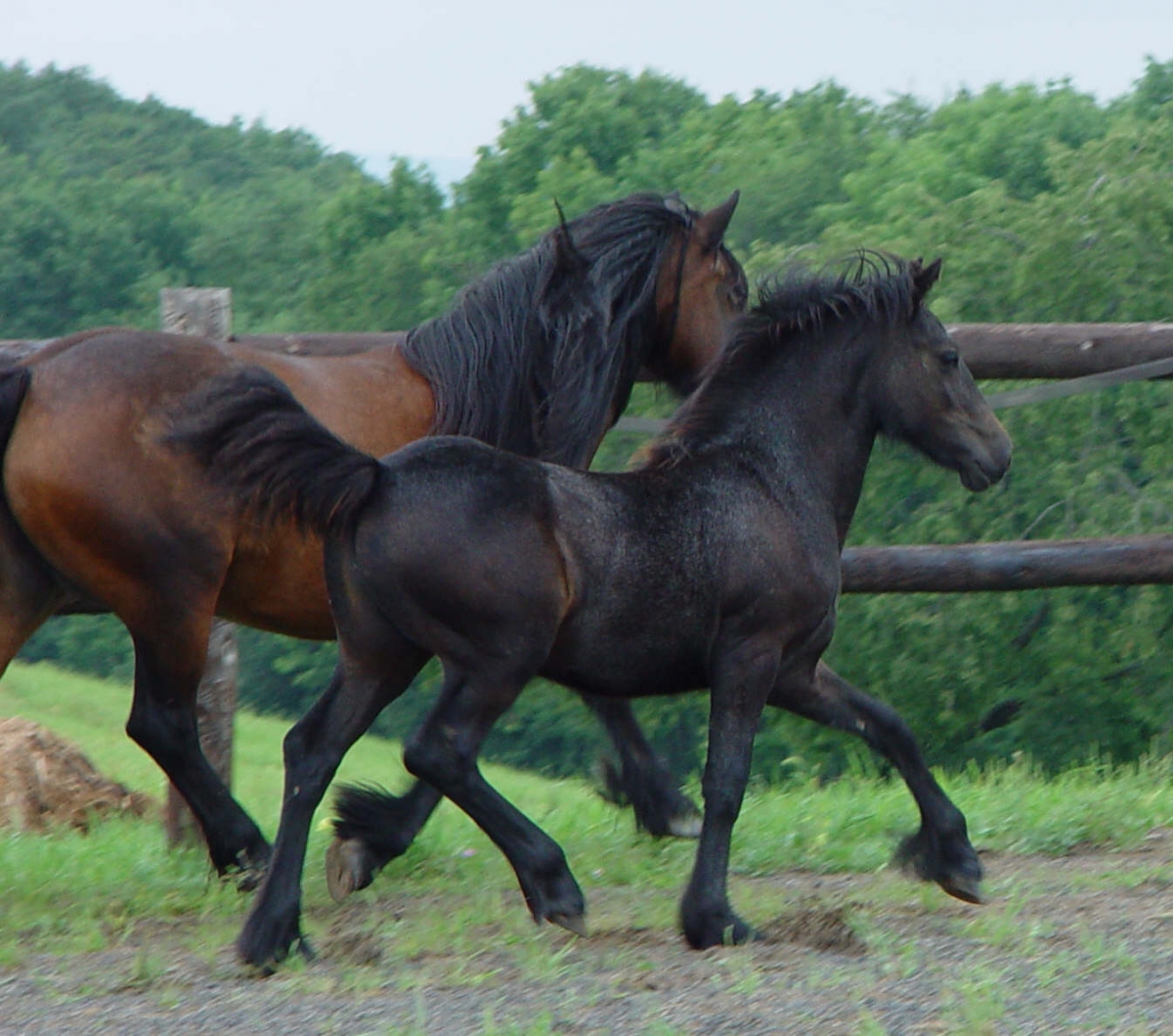
The Fell pony is a rare breed, listed as “at risk” with the Rare Breeds Survival Trust in the UK. It is also listed with Rare Breeds Canada as “critical,” meaning there are less than 15 animals in Canada. Shown are a Bay Fell mare and her five-month-old colt whose coat is changing from bay to grey. Photo: Courtesy of MJ Gould-Earley
Despite its rich evolution and history, the Fell pony is a rare breed and listed as ‘at risk’ with the Rare Breeds Survival Trust in the UK. It is also listed with Rare Breeds Canada. According to the Fell Pony Society of North America, there are approximately 300 Fells in North America and 6,000 worldwide with the majority in the U.K. Approximately 300 to 350 foals are registered globally each year. According Mary Jean Gould-Earley, chairperson of the Fell Pony Society of North America, some of the first registered Fell ponies brought to Canada were imported by the Thoroughbred racing giant, E.P. Taylor approximtely 50 years ago. There are still a few descendants of his ponies alive today. Currently in Canada, there are just 17 Fell ponies registered on the owner-based roster, seven in Ontario, two in Alberta and eight in British Columbia.
Like a number of breeds, the Fell pony is not exempt from genetic challenges in the breeding barn. During the early 1990s, a very rare condition affecting newborn Fell pony foals surfaced that came to be known as Fell pony foal syndrome.
“A foal develops bone marrow failure affecting the production of both red blood cells and a certain type of white blood cell (called) B lymphocytes, which are the cells responsible for producing disease-fighting antibodies,” explained Gould-Earley.
Stonecreek Ivy, a six-month-old Fell pony filly, on her arrival after a seven day journey from Stonecreek Farm in Texas, to her new home at Three Gables Farm on Salt Spring Island in January. Photo: Courtesy of Natascha Wille
Affected foals may be born with normal levels of both types of cells but they progressively decline after that and by four to six weeks they are profoundly anemic with severe immunodeficiency. They usually die or are euthanized due to infection or anemia by two months of age.”
The condition has received a great deal of research work which is still ongoing. The cause for the condition is believed to be genetic and the responsible gene may or may not surface at breeding, depending on whether both the stallion and the dam are carriers.
One ongoing research priority is to isolate the marker for the responsible gene so that breeders will be able to have their stock tested to determine the viability of the offspring from a chosen dam and sire. Since the syndrome only affects foals within their first few months of life, all those that survive beyond three months of age are no longer at risk and will mature as normal healthy adults. In North America there have only been two or three cases of the Syndrome in the last 15 years.
The future for the Fell pony, though, looks bright. Not only are they appreciated as a pleasure riding and competition mount but there has been a groundswell shift in Britain to appreciate native ponies as conservation grazers. A 2005 feasibility study by David Anthony Murray which was supported by the Department for Environment, Food and Rural Affairs, English Nature, Friends of the Lake District, and The Fell Pony Society recognized the suitability of the Fell as a conservation grazer to maintain the habitat biodiversity of Cumbria.
It can thrive on poor forage and will graze or browse on a wide variety of plant species thus controlling undesirable weed growth and stimulating growth of more succulant grasses for other wildlife. Despite its heritage, its contribution to an ecosystem has been largely underappreciated until very recently.
For their beauty, intelligence, versatility, work ethic, and stamina, the Fell pony offers much. In its name is the wild and challenging landscape that nurtured it; in its heritage is the mosaic of cultures it served; in its history is the story of a nation.
It has more than earned its place on the farm, with a riding family, or out in the wilds of the fells.
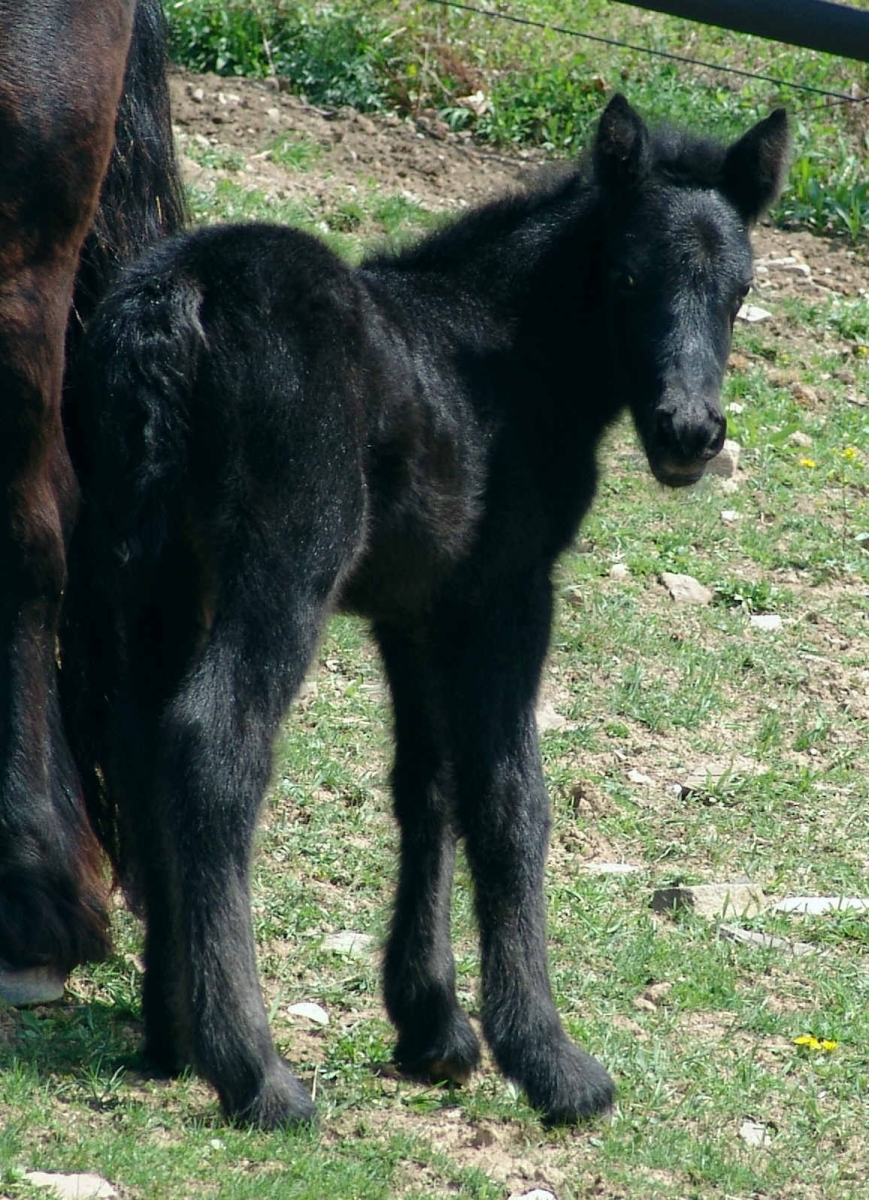
This filly, born in April 2008, is North America’s newest Fell pony. At less than two days old she is sturdy with great bone and a thick, healthy coat, designed to withstand the elements as a newborn on the fells. Photo: Courtesy of MJ Gould-Earley
For more information:
- The Fell Pony Society (www.fellponysociety.org)
- The Fell Pony Society of North America (www.fpsna.org)
Main photo: Courtesy of Bracklinn Fell Pony Stud - Carrock I’m Yer Man, a Fell pony stallion owned by the Bracklinn Fell Pony Stud in Scotland, was Supreme Champion three times at the FPS Stallion Show.



